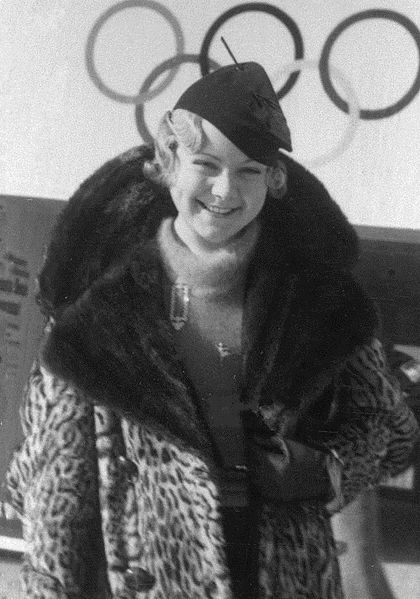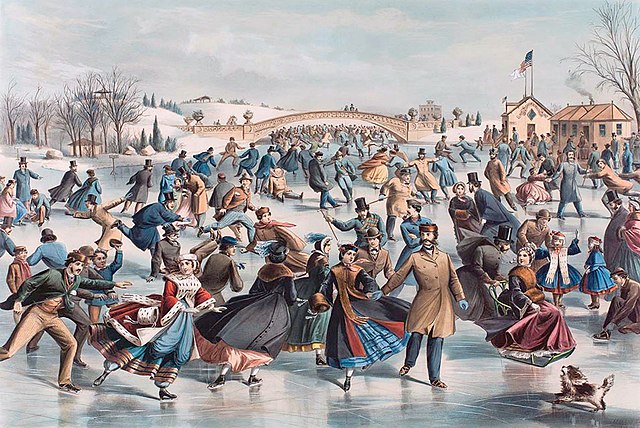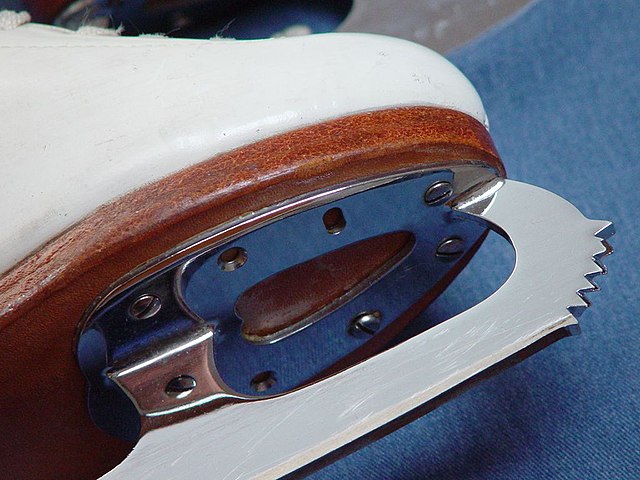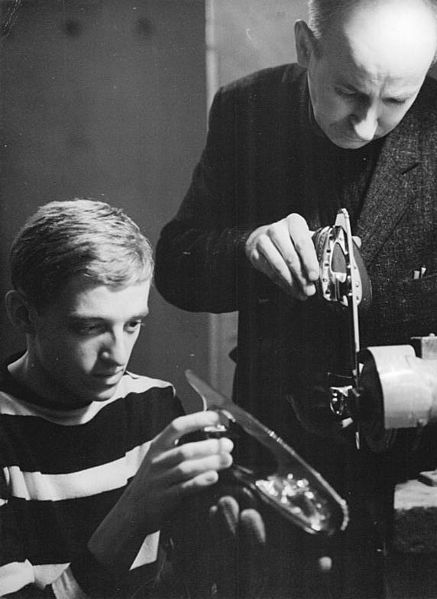Spins are an element in figure skating in which the skater rotates, centered on a single point on the ice, while holding one or more body positions. They are performed by all disciplines of the sport, single skating, pair skating, and ice dance, and are a required element in most figure skating competitions. As The New York Times says, "While jumps look like sport, spins look more like art. While jumps provide the suspense, spins provide the scenery, but there is so much more to the scenery than most viewers have time or means to grasp". According to world champion and figure skating commentator Scott Hamilton, spins are often used "as breathing points or transitions to bigger things".
Kaori Sakamoto of Japan performing an upright spin.
Sonja Henie, 1936
Yuko Kawaguti, 2010. Illustration of angular momentum: As a skater pulls in her arms, she reduces her moment of inertia and rotates faster.
En dehors and en dedans in ballet
Figure skating is a sport in which individuals, pairs, or groups perform on figure skates on ice. It was the first winter sport to be included in the Olympic Games, with its introduction occurring at the 1908 Olympics in London. The Olympic disciplines are men's singles, women's singles, pair skating, and ice dance; the four individual disciplines are also combined into a team event, which was first included in the Winter Olympics in 2014. The non-Olympic disciplines include synchronized skating, Theater on Ice, and four skating. From intermediate through senior-level competition, skaters generally perform two programs, which, depending on the discipline, may include spins, jumps, moves in the field, lifts, throw jumps, death spirals, and other elements or moves.
Figure skater Yuzuru Hanyu (2019)
"Central Park, Winter: the Skating Pond", 1862 lithograph
Close-up of a figure skating blade, showing the toe picks, the hollow (groove) on the bottom of the blade, and screw attachment
Blade sharpening








